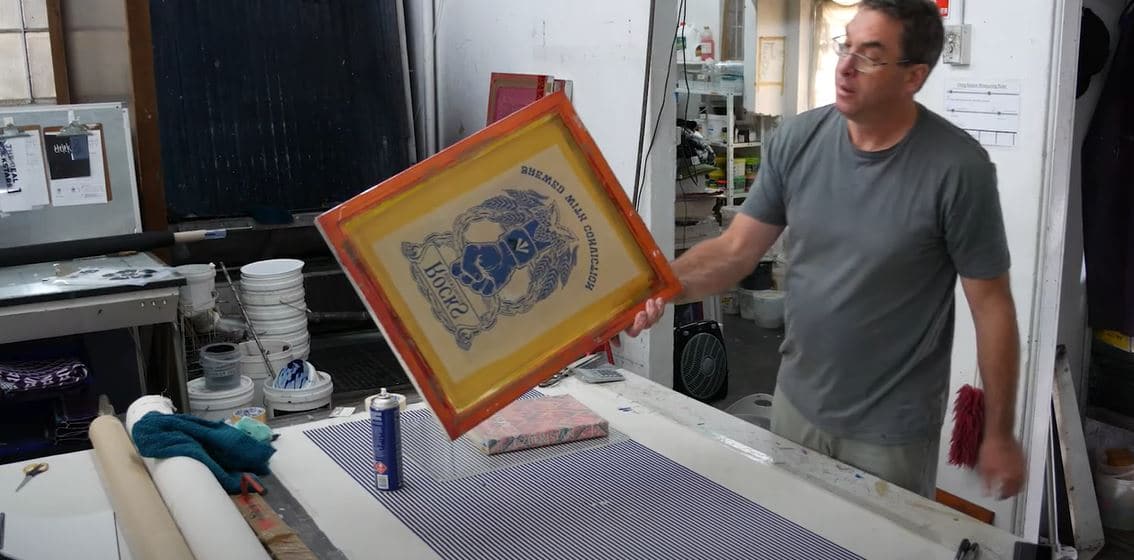ChatGPT said: How 10:9 Design Abilene is serving the community
Wiki Article
The Necessary Guide to Comprehending Screen Printing and Its Versatile Uses
Screen printing has a rich history that dates back to old times, evolving into an innovative technique made use of throughout different sectors today. This guide checks out the intricacies of the screen printing process, detailing its applications in home, fashion, and marketing decoration - 10:9 Design Embroidery. Recognizing these principles can open creative capacity for both business and artistic projects. The following areas will reveal essential suggestions and methods to boost one's screen printing undertakingsThe History of Screen Printing
Screen printing has roots that map back centuries, its evolution shows the technological and artistic advancements of various societies. Coming from in ancient China, the strategy was originally made use of for enhancing textiles and later infect Japan, where it ended up being indispensable to Ukiyo-e woodblock printing. The approach moved to Europe in the 18th century, where it gained appeal amongst artisans and commercial printers. The innovation of image emulsion in the 20th century transformed screen printing, allowing for even more detailed layouts and better performance. Musicians like Andy Warhol further thrust its appeal, utilizing the medium to develop renowned works that combined commercialism and great art. By the late 20th century, screen printing had established itself as a versatile strategy, used in vogue, advertising and marketing, and art. Today, it continues to evolve, incorporating digital innovation and broadening its applications across different industries.The Screen Printing Process Explained
Screen printing transforms imaginative visions right into substantial styles with a series of specific actions. A picture is created and then transferred onto a screen, normally made of great mesh fabric extended over a frame. A light-sensitive emulsion is put on the screen, which is exposed to light, hardening in areas not covered by the image. After rinsing the unhardened solution, a pattern is developed.Next off, the screen is put over the substratum, whether it be fabric, paper, or an additional material. Ink is after that pressed through the open areas of the stencil making use of a squeegee, depositing the layout onto the substrate listed below. This process can be repeated for several colors, calling for separate screens for each shade. Finally, the printed thing is healed using warmth to ensure the ink adheres properly, causing a long lasting, vivid layout on-line.
Types of Screen Printing Techniques

Additionally, specialized techniques, such as discharge screen printing, get rid of dye from the textile to produce softer prints, while aluminum foil screen printing uses metal aluminum foil to achieve a glossy coating (10:9 Design Screen Printing). Each technique offers unique attributes, satisfying various innovative needs and manufacturing ranges, eventually increasing the opportunities within the screen printing domain
Applications of Screen Printing in Various Industries

Furthermore, the signage and advertising and marketing fields utilize screen printing for creating attractive screens and banners. This method enables strong shades and intricate layouts that catch interest. In electronics, screen printing is used for applying conductive inks to motherboard, crucial for element links. In addition, the home style industry accepts screen printing to create distinct styles on fabrics and wall surface art. In general, screen printing functions as an important tool throughout varied areas, boosting items with customized and visually appealing graphics.
Tips for Effective Screen Printing Projects
While carrying out a screen printing job, careful focus to detail can considerably improve the final result. Picking top notch products is important; this includes the screen, inks, and substratums. Utilizing proper mesh counts can affect ink deposition and information resolution. Prep work is just as essential; detailed cleaning of displays and correct exposure times assure crisp prints.Next, accurate enrollment is important for multi-color prints. Making use of alignment tools can aid attain specific layering. Additionally, screening prints on scrap materials prior to manufacturing assists recognize potential concerns without throwing away sources.

Often Asked Inquiries
What Materials Are Ideal for Screen Printing on Textile?
Cotton and polyester blends are excellent for screen printing on material because of their durability and ink absorption. Additionally, specialty textiles like silk or canvas can produce unique appearances and finishes, improving the overall layout top quality.Exactly how Do I Clean and Maintain Screen Printing Equipment?
To preserve and clean screen printing tools, one must routinely wash screens with ideal solvents, inspect squeegees for wear, oil moving components, and shop all things in a completely dry, dust-free environment to prolong their lifespan.What Are the Environmental Effects of Screen Printing?
Screen printing can have significant ecological effects, including chemical waste from solvents and inks, water usage during cleaning processes, and power consumption. Sustainable practices and green products are important for decreasing these unfavorable effects.Can Screen Printing Be Done in the house Successfully?
Screen printing can be effectively done at home with the right products and strategies. Enthusiasts can produce quality prints, though success depends upon their skill degree, equipment, and understanding of the procedure involved.
What Are the Expenses Connected With Beginning a Display Printing Service?

Starting a screen printing company includes prices for tools, products, and work space. First expenses commonly range from a few hundred to a number of thousand dollars, depending upon the range, quality of equipment, and preferred manufacturing capacity.
Screen printing has an abundant history that dates back to ancient times, advancing into an innovative strategy used throughout numerous industries today. Another strategy, rotating screen printing, employs cylindrical screens, promoting continual printing on material rolls, thereby boosting effectiveness for large-scale manufacturings. In addition, specialized strategies, such as discharge screen printing, remove color from the textile check it out to develop softer prints, while foil screen printing applies metallic foil to achieve a glossy coating. In the style field, screen printing is commonly made use of to develop lively styles on apparel, allowing brand names to showcase their distinct styles. Cotton and polyester blends are perfect for screen printing on fabric due to their resilience and ink absorption.
Report this wiki page